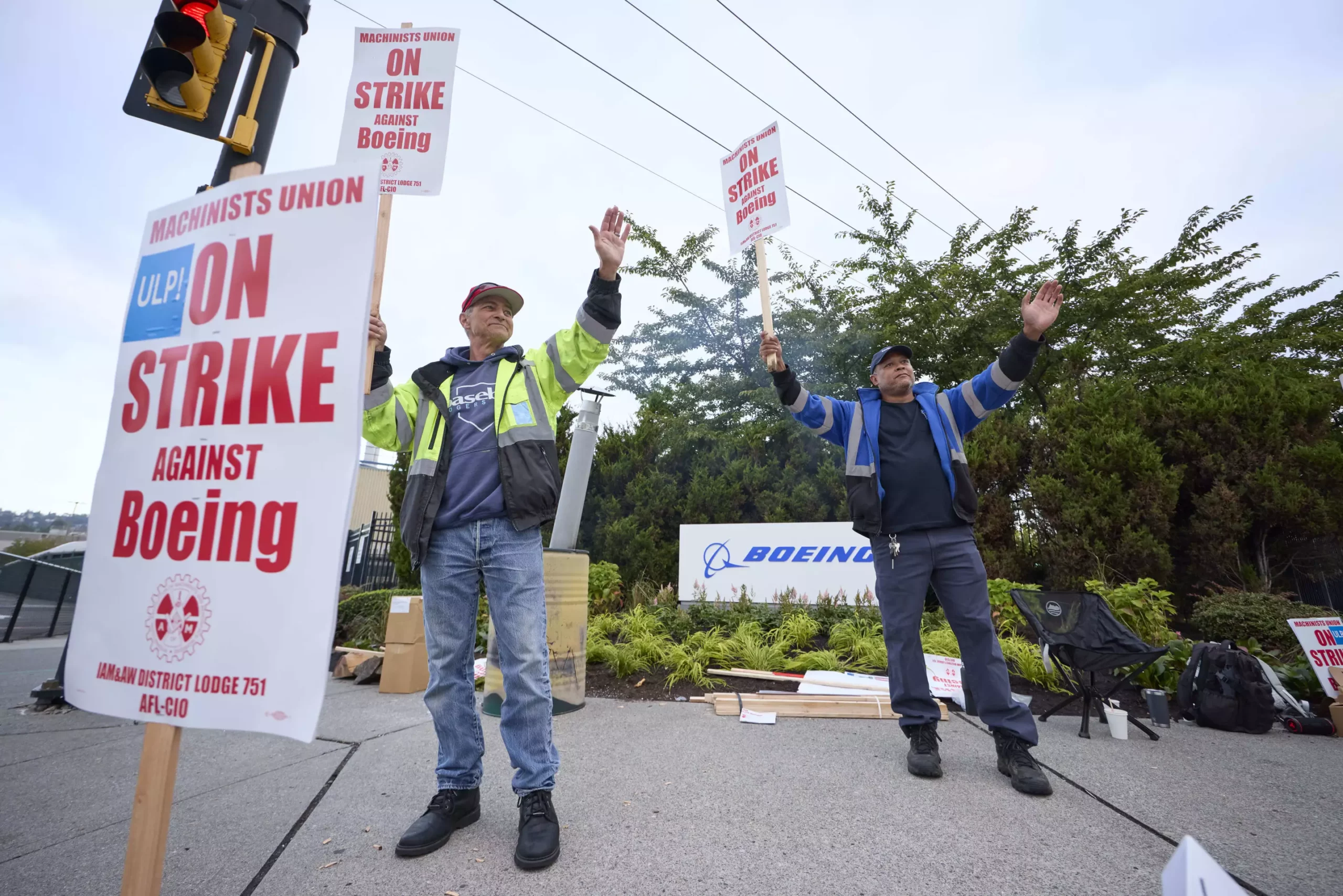In what could be a pivotal moment for the aerospace industry, thousands of blue-collar workers at Boeing have opted to abandon their workstations and join picket lines across the Pacific Northwest instead of assembling aircraft. The International Association of Machinists and Aerospace Workers (IAM) reported a resounding 94.6% rejection of a proposed contract that would have increased wages by 25% over a span of four years. This walkout affects about 33,000 machinists who are crucial to the production of Boeing’s top-selling aircraft, potentially crippling operations at a time when the company faces multiple challenges, including billions in financial losses and a damaged public image.
While it seems unlikely that the strike will have an immediate impact on air travel, it has nonetheless raised alarms regarding Boeing’s operational capabilities. The company’s leadership must now confront both the economic and reputational ramifications of a prolonged strike, as labor relations continue to fracture in an industry already burdened with scrutiny.
The strike has highlighted a profound discontent among workers who feel inadequately compensated amid rising living costs in the Pacific Northwest. Many of the employees, including toolmaker John Olson, noted that their wages have barely kept pace with inflation, lamenting that prior contracts have not adequately addressed this crucial issue. Olson states that his pay has seen just a meager 2% increase over his six-year tenure, underlining a critical frustration that resonates across the assembly lines.
One key point of contention was the change in the calculation method for annual bonuses, which further fueled dissatisfaction among the workforce. While Boeing claimed that the average machinist earns $75,608 annually, many workers were skeptical about the sufficiency of these earnings. The rejected contract offered a mixed bag of incentives—lump sum payments and reduced health care costs—but could not satisfy the union’s more ambitious demand for a 40% raise over three years.
IAM District 751 President Jon Holden has vocalized deep concerns about the union’s outdated agreements, and he stressed a need to reassess priorities as negotiations continue. With a background entrenched in the history of labor negotiations at Boeing, Holden sees the strike as a critical juncture for labor rights and workers’ respect in the industry. “This is about respect,” he declared, emphasizing that the ongoing conflict is not just about wages but about recognition for years of sacrifices made by workers.
Boeing’s management, under the new leadership of CEO Kelly Ortberg, faces an uphill battle as it attempts to navigate not only the current strike but the broader implications of labor unrest. The last significant strike occurred in 2008 and lasted for eight weeks, costing the company an estimated $100 million daily in deferred revenue, setting a daunting precedent for how this current situation might unfold. Financial analysts, like Jefferies’ Sheila Kahyaoglu, estimate comparable losses, potentially upwards of $3 billion when accounting for inflation and shifts in production rates.
While production for certain models like the Boeing 787 Dreamliner may remain unaffected due to different workforce arrangements, the broader implications for models such as the 737 Max, which is assembled primarily by union workers, are dire. The very heart of Boeing’s production capacity is at stake, compounded by a reality where airlines typically pay a substantial portion of a plane’s cost upon delivery. As operations stall, Boeing stands to lose a critical revenue stream and face financial strain that could push the company into deeper economic instability.
As both the workers and management gear up for what may be a protracted showdown, the stakes have never been higher for Boeing. The company has expressed a desire to return to negotiations but must also grapple with the reality that the contract rejected was supported by its own bargaining committee. The resounding voice of the rank-and-file workers signals a clear message: they seek more than just financial compensation; they demand dignity, respect, and recognition in an industry that has often undervalued their contributions.
In a landscape where both public opinion and economic pressures coalesce, this strike could be viewed as a crucial inflection point, not just for Boeing, but for labor relations within the United States at large. How the company responds may set the tone for future negotiations across numerous industries grappling with similar wage and job security concerns. The world will be watching closely as both sides prepare to reconvene, hoping to find a deal that addresses the legitimate fears and aspirations of the workers while securing the future of one of America’s largest corporations.


Leave a Reply